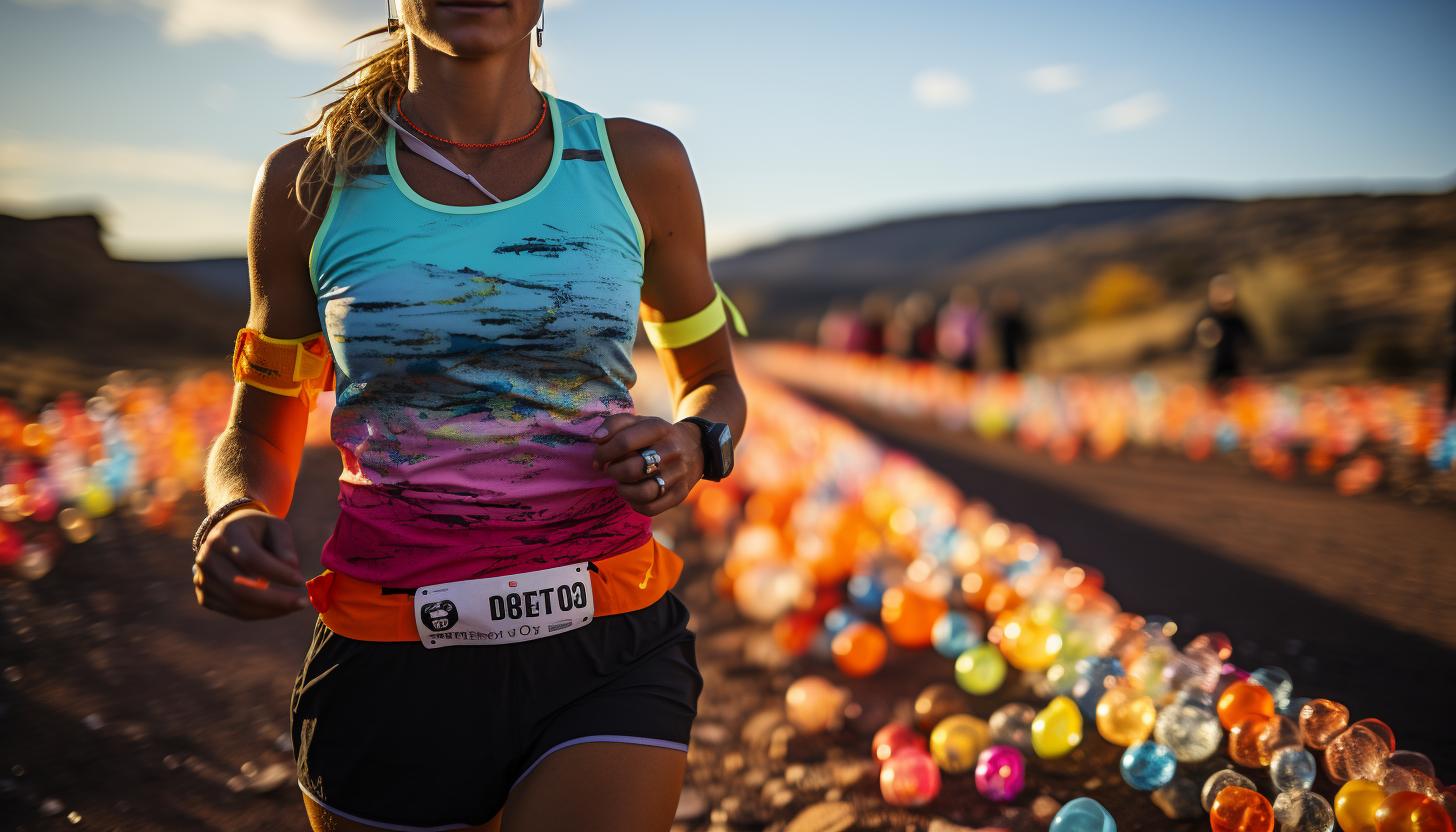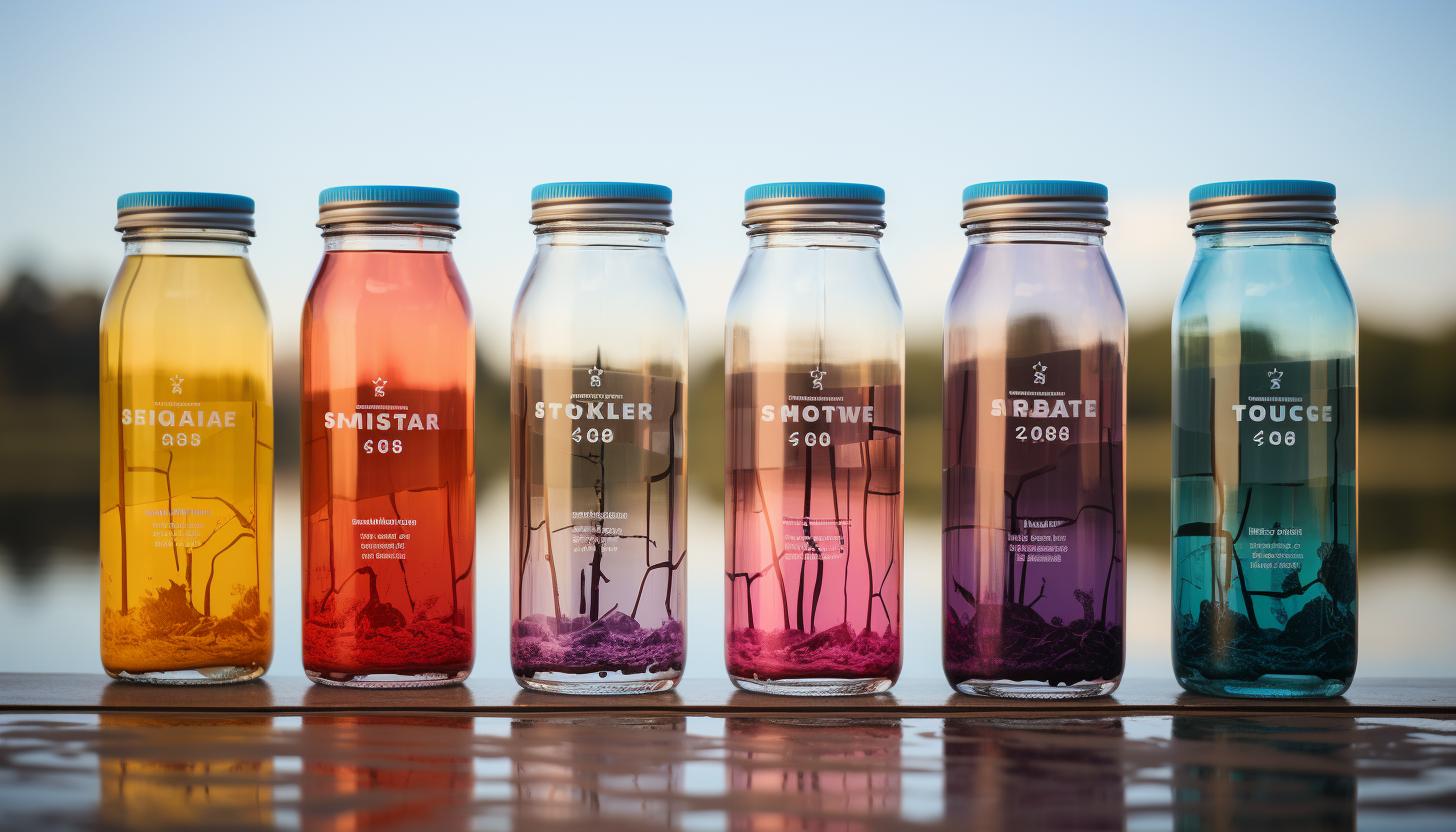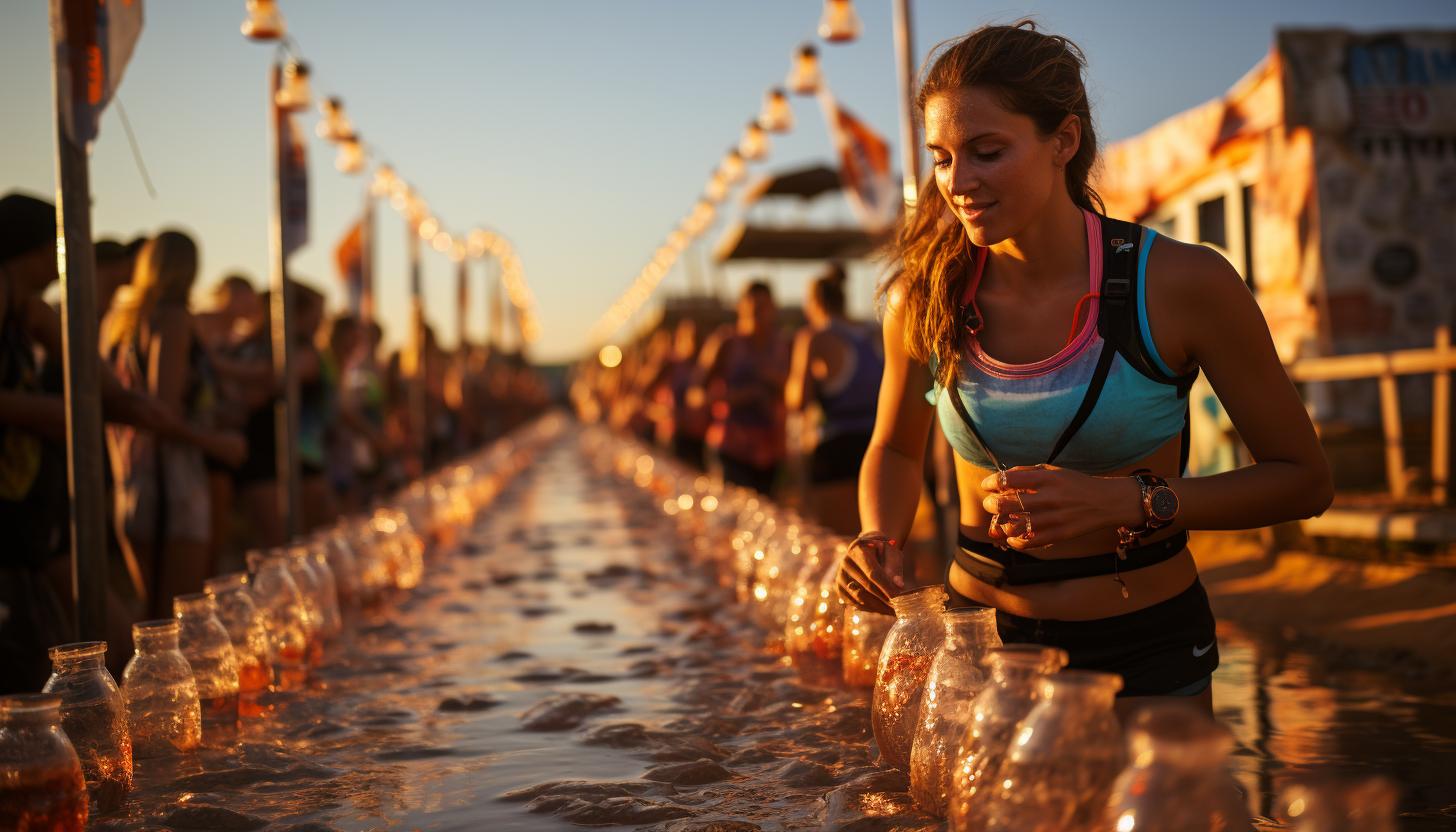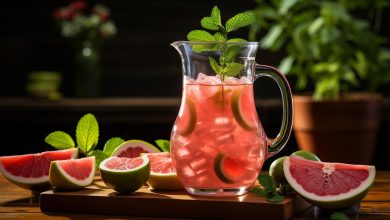Staying Hydrated on Race Day: Expert Tips

Did you know that staying hydrated on race day can improve your performance by up to 20%?
In this article, we will provide expert tips on how to keep yourself properly hydrated during races.
From understanding the importance of hydration to developing effective strategies and following best practices, you’ll learn everything you need to know about maintaining optimal hydration levels for different race distances.
Get ready to conquer the course with these evidence-based hydration guidelines and recovery tips.
Importance of Hydration During Races

You need to make sure you’re properly hydrated during races to maintain your performance and avoid dehydration. Proper hydration is essential for endurance events because it provides numerous benefits that can enhance your overall race experience.
First and foremost, staying hydrated helps regulate your body temperature, preventing overheating and reducing the risk of heat-related illnesses. It also ensures optimal blood flow, delivering oxygen and nutrients to your muscles more efficiently, which can improve your endurance and delay fatigue. Additionally, proper hydration supports joint lubrication, reducing the risk of injuries such as cramps or muscle strains.
However, there are common hydration mistakes that you should avoid during races. One mistake is waiting until you feel thirsty before drinking water. Thirst is a late indicator of dehydration, so it’s crucial to drink fluids regularly throughout the race even if you don’t feel thirsty yet. Another mistake is relying only on water without replenishing electrolytes lost through sweat. Electrolytes such as sodium and potassium are vital for maintaining fluid balance in your body, so consider consuming sports drinks or electrolyte-rich foods during longer races.
Preparing Hydration Strategies for Race Day

Before a big race, it’s important to start planning your hydration strategies. Proper hydration is crucial for optimal performance and overall well-being on race day. Here are some expert tips to help you prepare:
– Assess your fluid needs: Determine how much fluid you need to consume during the race by calculating your sweat rate and considering environmental factors such as temperature and humidity.
– Establish a hydrating routine: Develop a consistent hydration routine in the weeks leading up to the race. This includes drinking enough fluids throughout the day and incorporating electrolyte-rich beverages into your regimen.
– Practice with different fluids: Experiment with various drinks during training runs to find what works best for you. Consider sports drinks that provide electrolytes, carbohydrates, and fluids for sustained energy.
By implementing these hydration strategies, you can ensure that you are adequately prepared for race day. However, it’s also essential to understand specific guidelines based on different race distances to optimize your performance fully.
Transitioning into the next section about ‘hydration guidelines for different race distances,’ let’s explore how these strategies can be tailored according to varying racing lengths.
Hydration Guidelines for Different Race Distances

To optimize your performance during different race distances, it’s crucial to understand the hydration guidelines specific to each length. Hydration plays a vital role in maximizing your potential on race day. For endurance races, such as marathons or ultramarathons, optimal hydration is essential for sustaining energy levels and preventing dehydration.
During endurance races, it’s recommended to consume fluids regularly throughout the event. Aim to drink 5-10 ounces of fluid every 15-20 minutes. This will help maintain proper hydration and replace any fluids lost through sweat. Water is usually sufficient for races lasting less than an hour, but for longer events, sports drinks containing electrolytes can be beneficial in replenishing lost minerals.
On the other hand, shorter distance races require different hydration strategies. For runs lasting less than an hour, pre-hydration becomes more important. It’s advised to drink water or a sports drink about 1-2 hours before the race to ensure you start properly hydrated.
During these shorter races, focus on hydrating after the event rather than during. Replenish your fluids with water or a recovery drink within 30 minutes of finishing the race.
By understanding and implementing these hydration guidelines specific to each race distance, you’ll give yourself the best chance at performing at your peak level while minimizing the risk of dehydration or overhydration.
Stay hydrated and conquer those race distances!
Best Hydration Practices During a Race

During a race, it’s essential to regularly consume fluids to maintain optimal hydration levels and maximize performance. Hydration strategies can vary depending on the individual and the specific race conditions, but there are some key practices that can help you stay hydrated throughout your race:
– Drink early and often: Start hydrating well before the race begins, and continue to drink at regular intervals during the event. Sip small amounts of fluid frequently rather than gulping large amounts all at once.
– Choose the right fluids: Water is a great choice for shorter races or when the weather is cool. For longer races or in hot conditions, electrolyte drinks can help replenish lost minerals and maintain proper fluid balance.
– Practice your hydration plan: It’s important to know how your body responds to different hydration strategies before race day. Experiment with different fluids, timings, and quantities during training runs to find what works best for you.
Remember that everyone’s hydration needs are unique, so it’s crucial to listen to your body and adjust your intake accordingly. By following these tips and developing a personalized hydration plan, you can ensure that you stay properly hydrated during your race and perform at your best.
Post-Race Hydration and Recovery Tips

After completing a race, it’s important to replenish your fluids and electrolytes to aid in recovery and prevent dehydration. Effective rehydration methods include consuming water and sports drinks that contain electrolytes. Water helps replace lost fluids, while electrolytes such as sodium, potassium, and magnesium help restore the balance of minerals in your body.
Replenishing your electrolytes after a race has numerous benefits. Electrolyte replenishment helps restore muscle function and prevents cramping. During exercise, you lose electrolytes through sweat, so replacing them is essential for optimal performance in future races or training sessions. Additionally, proper post-race hydration can reduce the risk of post-exercise muscle soreness.
To effectively replenish your fluids and electrolytes after a race, aim to drink 16-24 ounces of water or a sports drink within the first hour of finishing. Continue hydrating throughout the day by sipping on fluids regularly. It’s also important to include foods high in water content, such as fruits and vegetables.
Remember that every individual is different, so listen to your body’s signals when it comes to hydration needs. By following these effective rehydration methods and focusing on post-race electrolyte replenishment, you can support your body’s recovery process and optimize your performance for future races.
Conclusion
In conclusion, staying hydrated on race day is crucial for optimal performance and recovery. By following expert tips and preparing hydration strategies, you can ensure that you are adequately hydrated throughout the race.
It is recommended to drink 5-10 ounces of fluid every 15-20 minutes during a race. Interestingly, studies have shown that even mild dehydration can significantly impair endurance performance by up to 10%.
So, make hydration a priority on race day to maximize your potential and achieve your goals.






